UN INT Intro Text w/ Responsive Image - *Important Note* You must UNLINK this shared library component before making page-specific customizations.
A breaking Manfred Karremann investigation released by PETA Germany reveals the extreme cruelty endured by animals like cows and sheep in the leather trade. Here is what was found:
- Animals are shipped on long, grueling journeys to locations halfway around the globe before being killed for leather.
- During transport, the animals are exposed to the elements and denied sufficient food and water, and they can fall and be trampled to death. Even pregnant animals are forced to endure live export.
- Injured and dying animals are often illegally slaughtered, and that includes those who are pregnant.
- In many countries, animals are killed without first being stunned. They're simply tied up and their throats are cut with a dull knife. It can take several minutes for them to die.
- Inadequate labeling on leather products makes it nearly impossible to trace the origin of animals and their skins. Designations like "Made in Italy" do not accurately reveal animal skins' origins, so consumers can't tell where or which animal the leather in their handbags, shoes, or furniture really came from.
Shipped Halfway Around the Globe for Leather Production
More than 1.4 billion cows, sheep, and goats and millions of other animals are killed each year for leather. In countries like Turkey, the trade in skins is booming—causing the cruel export of live animals to rise sharply. In 2018, 900,000 live cattle and nearly 281,000 live sheep were imported into Turkey from countries like Australia, Austria, Brazil, France, Germany, Ireland, and Spain.
These animals are exported for slaughter to countries such as Turkey in order to meet the demand for fresh halal meat on site and the global demand for leather. After slaughter, their skins are shipped all over the world, including to the U.S.
Investigators were able to document some of the torturous routes animals endured. Brazilian cows are transported for weeks on ships bound for Turkey. There, some animals continue on to Iraq in trucks. Another route leads to Turkey via France and Bulgaria. And German and Austrian cows were able to be traced all the way to Lebanon.
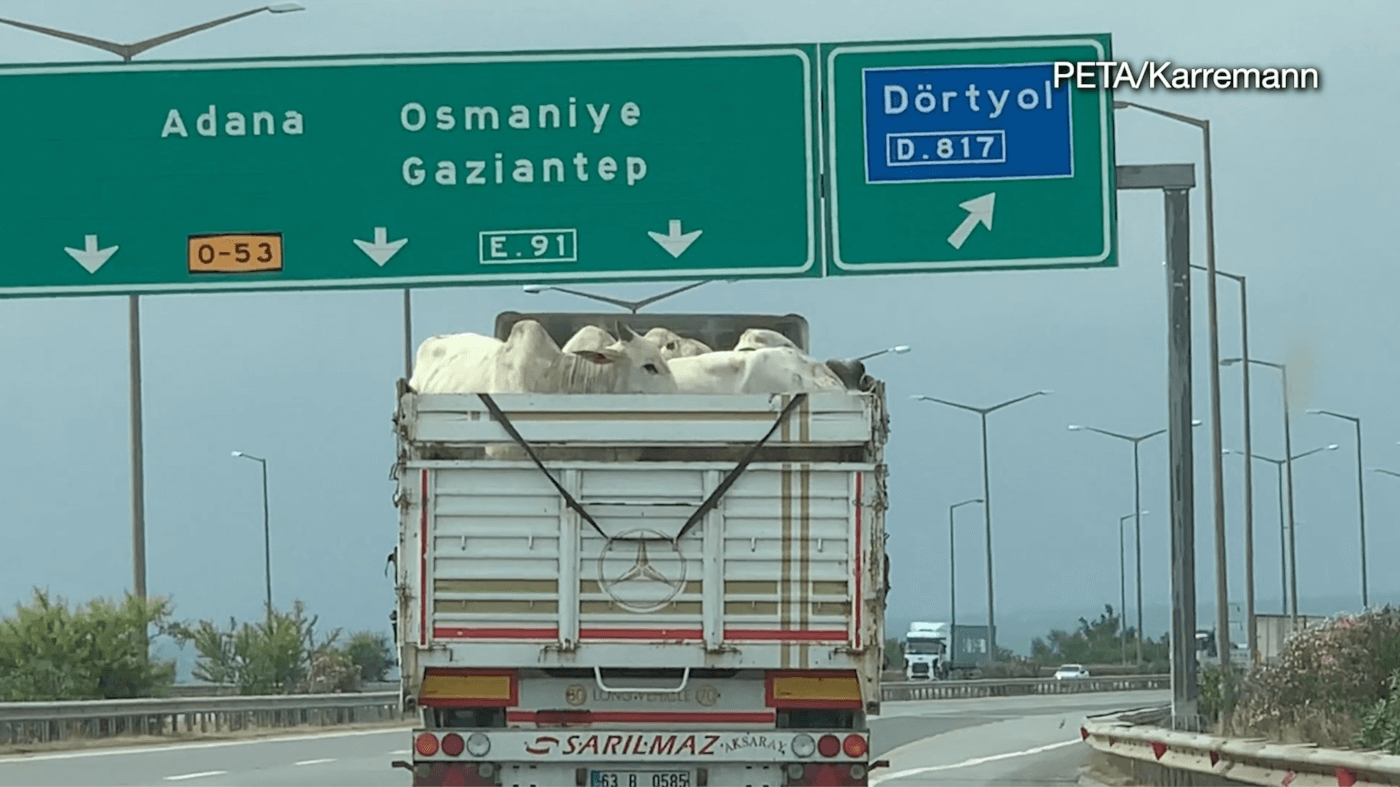
Animals Transported Without Adequate Food or Water on Ships and in Trucks
Typically, during the arduous, often weeks-long voyages, the animals receive insufficient food and water. They're exposed to heat and cold with no protection and stand huddled tightly together amid their own excrement. During transport, they jostle each other, causing injuries. If they fall down, they can be trampled to death.
Animals in the international leather industry are commonly kept, transported, and killed in filthy, crowded conditions in which devastating zoonotic diseases can develop and spread. It can take days to transport animals across national borders. And global security issues, such as the COVID-19 pandemic, have forced animals to endure even longer journeys and more suffering. The stress of transport—often compounded by lengthy delays—results in not only immeasurable suffering but also a heightened risk of spreading diseases—some of which can be passed on to humans.
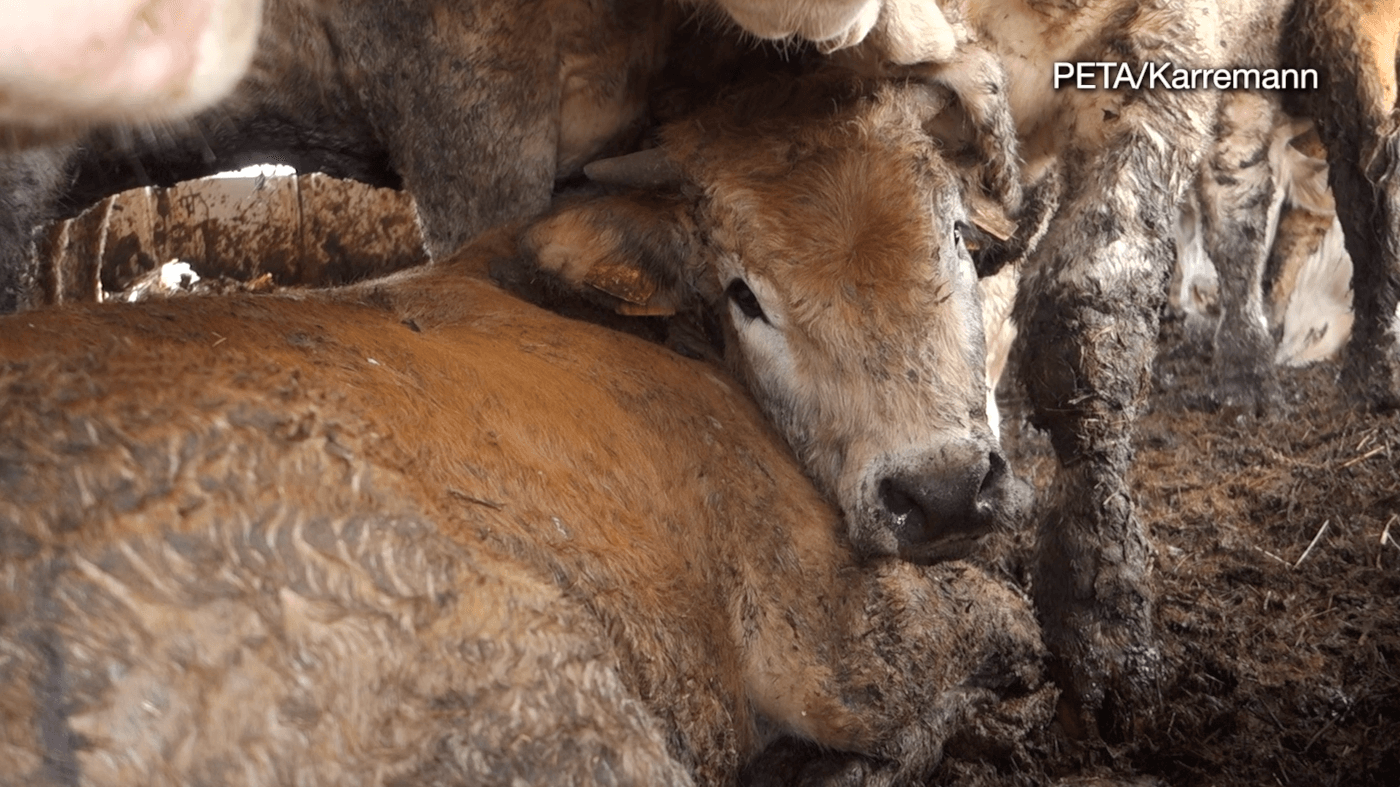
Killed Without Stunning for Leather Production
In many countries, the animals are killed without first being stunned. Cows, sheep, and goats are simply pushed to the ground, sometimes they're tied up, and their throats are slit with a knife. Because of poorly trained workers or the use of dull knives, their deaths are agonizing and can last several minutes.
Cows and sheep are social animals, often forming close friendships with others. But recordings from Libya and Lebanon show that workers slit the throats of cows and sheep in full view of the other animals and throw them onto a pile to let them bleed out, while they writhe and kick.
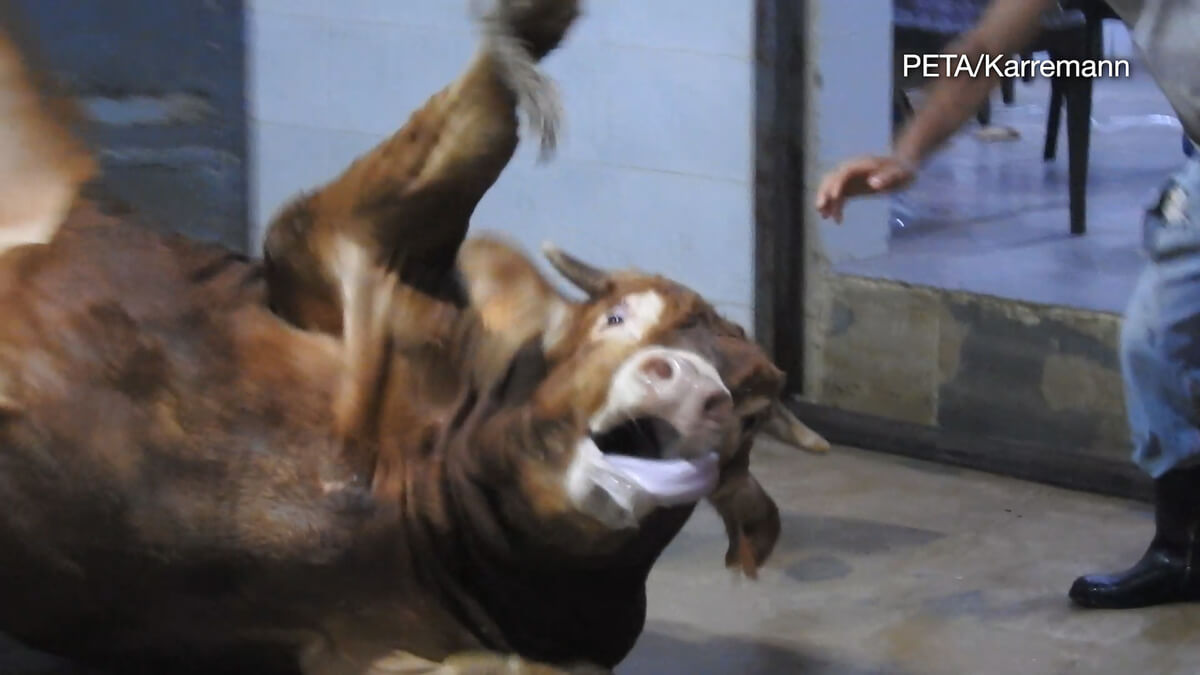
Injured Animals Are Killed Illegally in Slaughterhouses
Although it is illegal in Turkey to haul injured or dying animals to the slaughterhouse, the footage shows that workers forcibly dragged a weak, apparently dying cow out of a tractor-trailer then slit his throat in the slaughterhouse. Even pregnant animals have to endure the agony of live export. And if they injure themselves during transport, they, too, are hauled to the slaughterhouse and killed, along with their unborn babies. The skin of unborn calves, known as "slunk," is regarded as particularly valuable for leather in countries like China, and it also reaches countries around the world via the global leather trade.

Cows Are Forcibly Dragged off Ships With Cranes
When, after days or weeks, the animals finally reach their destination, their fur is frequently matted with a thick coating of excrement and urine. Some are so weak or injured, that they no longer have the strength to stand up. So they're hoisted with cranes, their entire weight hanging by one leg. Since a grown cow weighs over a thousand pounds, this can cause excruciatingly painful joint dislocations and broken legs.

Leather's Origin Is Frequently Unknown
Because of inadequate labeling requirements for leather products and nontransparent trade routes, it is usually impossible to trace the origin of the animals and their skins. Consumers can't tell whether their shoe or handbag was made from the skin of a cow, a dog, or a kangaroo or which country the animal was slaughtered in. Designations like "Made in Italy" don't reveal any information about the origin or the processing of the skin—only where the finished product was manufactured.
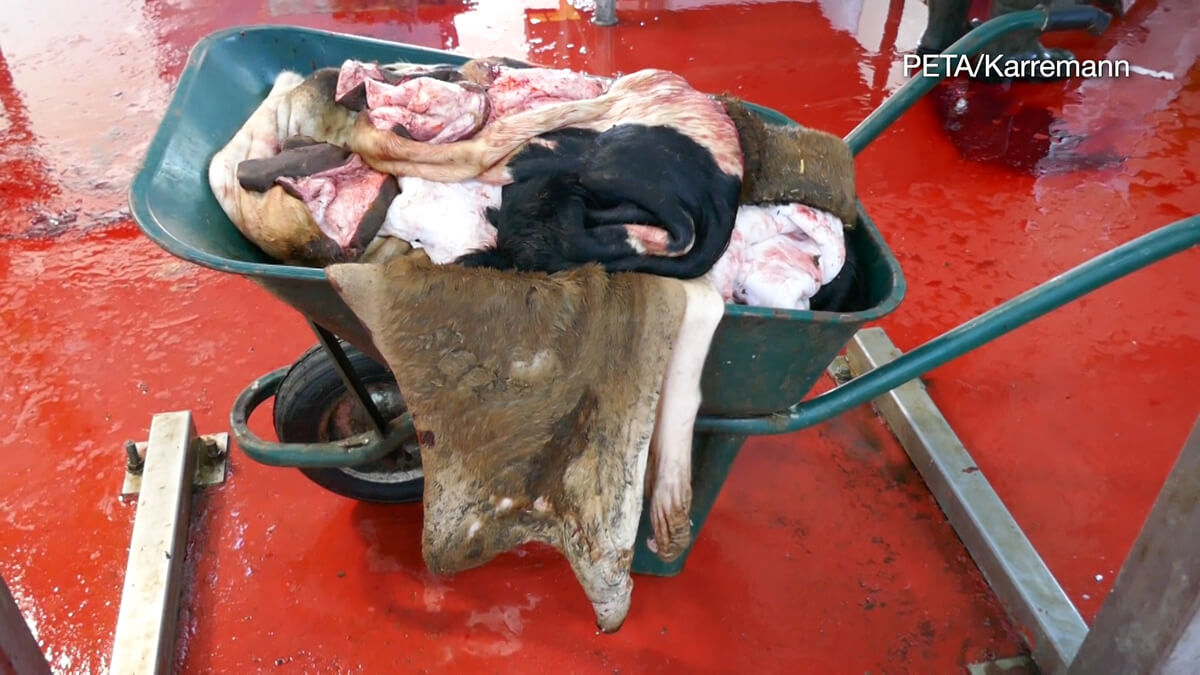
Leather Is a Catastrophe for Humans and Nature
Leather not only causes animals to suffer, it is also one of the most environmentally damaging products in the world. Each day, irreplaceable rainforests are cleared to raise cows and grow their feed. The animals' methane emissions also contribute tremendously to climate change. In addition, numerous chemicals such as chromium and formaldehyde are used in the tanning process, which poses a danger to both the environment and humans. End products like shoes, handbags, and clothing often contain traces of chromium-6, a carcinogenic heavy metal.
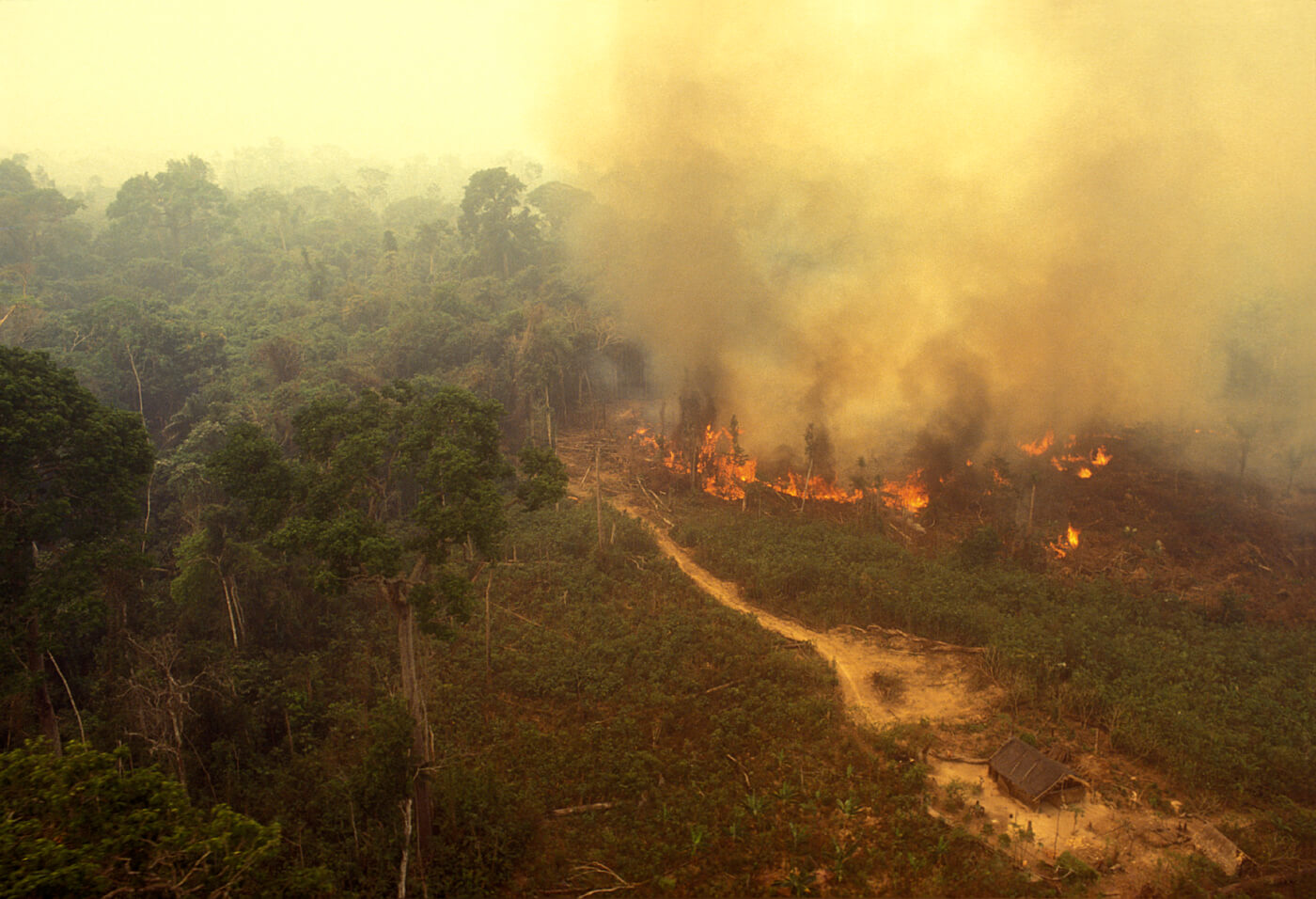
What You Can Do
Regardless of leather's origins, it is always linked with animal suffering and environmental degradation. While we treat dogs and cats as our companions, millions of animals like cows, sheep, and goats are standing knee-deep in their own excrement, tormented with electric shocks, transported in cramped tractor-trailers halfway around the globe, and finally killed. These sensitive animals feel joy, pain, and fear and share our desire to live, but are denied that so their skins can be stolen and turned into handbags, shoes, and furniture.
Please, for animals' sake, always check the label, and if it says "leather" or shows the corresponding symbol for it, leave the item on the shelf. Instead, choose sustainable synthetic leathers and vegan alternatives made from innovative materials like recycled plastic, cork, or even pineapple leaves, mushrooms, grapes, apple peels, or other fruit waste.
Want to Do More to Stop the Killing of Animals for Their Skin?
Use our form below to speak out against the notoriously cruel and environmentally damaging leather industry.